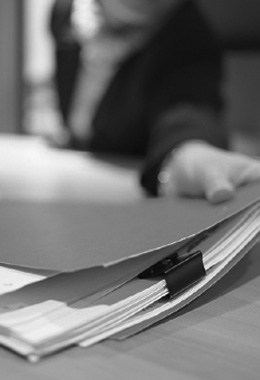
TRADEMARKS
Brief Explanation of the Legal System
A trademark may consist of a word or words (with or without meaning), designs, combinations of colors applied on a specific part of the product or packaging; packaging, combination of letters and figures; letters and figures with a special design; and advertising slogans, and other distinctive signs.
Trademarks in Argentina are governed by law 22.362, which has adopted the first-to-file system. Argentine legislation on trademarks applies equally to nationals and foreigners.
Classification and Registrability
Argentina has adopted the International Classification of Goods and Services established by the Nice Agreement. Argentine Trademark law provides an open list of signs which may be registered as trademarks, the only restrictions being those expressly specified by the law.
Cases of trademarks which may not be registered, expressly listed in the law, may be divided into two main groups:
I) Signs which are not distinctive enough to be considered trademarks, (i.e., the current designation of a product or service, signs which have become part of general use, the shape and colour of the products).
II) Signs which are distinctive enough to be considered trademarks but whose registration is expressly barred by law. These cases are:
a) Trademarks identical or similar to others previously registered or applied for.
b) National or foreign designations of origin.
c) Trademarks which may mislead consumers as to the nature, properties, origin, quality, function, etc., of the product.
d) Words, designs and any other sign contrary to public moral.
e) Letters, words or symbols used by State organizations or by religious or health organizations.
f) Letters, words or symbols used by foreign nations and by international organizations recognized by the Argentine government.
g) The name, pseudonym or portrait of a person without his consent or that of their heirs.
h) The name of activities, including company names which describe their activity (bank, hospital, etc.) may not be registered to identify products. However, the law specifically allows the registration of distinctive signs which are part of said names to identify products or services.
i) Advertising slogans lacking originality.
Procedure
Filing of the application: Trademarks or service marks may be applied for by any person or persons with a legitimate interest. ·
Publication: Applications are published once in the Trademark Bulletin for opposition purposes; such Bulletin is released once a week. There is a thirty-day period for third parties to submit oppositions, counted as from said publication date. The application is then submitted to a first examination by the Trademark Office authorities, who notify any objections together with the oppositions filed by third parties. If the applicant obtains the withdrawal of all oppositions filed and replies satisfactorily to all objections posed by the Trademark Office, the application will proceed to registration. Rejection of an application by the -Trademark Office may be appealed before the Trademark Office and/or the Courts.
Opposition procedure: Any third party has the right to file an opposition against a new application within thirty days following publication. The term for the parties to reach an amicable settlement in opposition proceedings will be of three months counted as from service of notice of the opposition.
If the parties do not reach an agreement within the above-mentioned term, the Trademark Office will decide on the merits of the opposition (administrative decision stage), provided that the opponent previously pays an official fee to ratify the opposition and thus open the administrative decision stage. The parties will have the chance to extend the arguments to support their claims, submit and produce evidence and file allegations.
Once these stages have been completed, the Trademark Office will decide on the merits of the opposition. The Trademark Office’s administrative decision on opposition proceedings may be appealed before the Court of Appeals.
If the opponent does not ratify the opposition, the administrative decision stage will not be opened and the opposition will be deemed as a mere “letter or protest”. It will be at the examiner’s own discretion to consider whether the arguments of the opposition were well founded or not. In the affirmative, the “letter of protest” will be treated as a citation (Office Action) and the applicant will have to overcome the citation by filing a response thereto with the Trademark Office.·
Substantive examination: After the opposition period has ended, the examiners will conduct a substantive examination to determine the application’s compliance with the legal requirements for registration as a trademark.
Duration and Use Requirements
Trademarks are registered for a term of ten years from the date of the granting resolution. Renewal of the registration is possible as long as the trademark has been used within five years prior to expiration. It is not necessary to submit proof of use but the applicant when requesting the renewal of the trademark must submit an affidavit stating that the trademark was used in Argentina during such period, indicating the products or services identified with such trademark or if the trademark was used as a commercial designation. Renewals are not subject to opposition. No grace period is granted to renew a trademark.
The Trademark Office may, on its own motion or at the request of a third party, declare the cancellation of trademark, totally or partially, in relation to the products or services for which it has not been used in the country within five years preceding the date on which the action was filed, except when force majeure reasons prevented such use. The Trademark Office’s administrative decision on the cancellation action may be appealed to the Court of Appeals.
FOREIGN NETWORK
Our Firm offers assistance for the protection of trademarks worldwide through a large network of specialized foreign associates.
This allows us to follow our clients’ international expansion, designing with them strategies adapted to the pace of their development.
